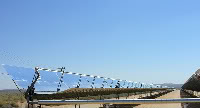John Hofmeister’s “Why We Hate The Oil Companies”
A reader writes in about my blog post on John Hofmeister’s “Why We Hate The Oil Companies.” In it, I point out that the author, the ex-CEO of Shell Oil, though hardly a radical, calls upon the oil industry to act in better conformity with the needs of “grass-roots Americans.” The inquiry reads:
He (Hofmeister) questions why oil companies act only with self-interest. Isn’t it because their role is to make money? Does he think that selfishness is going to be eliminated? It seems to me that selfishness is the driving force in everything I can think of (unfortunately). Please enlighten me.
I respond:
You bring up an interesting point. It seems to me that the history of our society is really about finding a balance between selfishness and its ultimate catastrophic effects. At any time until the signing of the Magna Carta in 1215, the king/pharaoh/you-name-it could imprison, torture, and kill anyone he wanted, for any reason. Before the Emancipation Proclamation in 1863, Americans could legally own slaves. Until the US Civil Rights Act of 1964, we had laws that cut across the rights of US citizens to vote and take part in many other activities that we all take for granted today. Clearly, the last few thousand years have taught us that selfishness needs the moderation that is brought along by the forces of reason and decency, and that this moderation cannot be an option taken only by the enlightened; it needs to be made a part of our laws.
Now there is no doubt that the self-interest that lies at the base of free-market capitalism does certain things very well. It sets prices and supply/demand curves, and, in most cases, rewards people who work hard. All of these are good. But we need to recognize that there are things that capitalism doesn’t do at all well – some of which we’ve seen emphasized in the recent financial meltdowns. Witness Enron, Bernie Madoff, and the devastation wreaked by the present-day Wall Street bandits, which has ruined the lives of countless millions of Americans and turned our financial markets upside down. Perhaps most horrifying in all this is the realization that it’s only a matter of time until this exact same stream of events recurs.
As much as we love the efficiency with which capitalism creates the markets that set our prices and determine the range of products and services we offer, we need to accept that it fails to deal well with at least two main issues:
1) Sustainable Wealth Distribution. As we observe every day, unbridled capitalism ensures that the rich get richer while the poor get poorer. And, as much as some people may think this is just fine, this eventual dissolution of the middle class will ultimately lead to collapse. We actually had this a few centuries ago; it’s called “feudalism,” and it really wasn’t all that good.
2) Environmental Protection. The economic self-interest of our day has led us to a point where our planet is in real danger. It is a sad truth that leaving each of us more or less on our own to self-regulate the level of toxins we dump into our environment has brought us to the brink of disaster. Not everyone agrees with me here, but it is, according to my research, alarmingly true.
There is more at stake now than an inequitable distribution of wealth that causes miserable lives for the impoverished majority of Earth’s seven billion current inhabitants. We’ve reached the point at which we’re sentencing huge levels of suffering on even more of us to come.
It is for this reason that I believe we need enlightened government — one that will force compliance with critical environmental issues — an important one of which is our renewable energy portfolio. But goodness knows from where this government may derive; we certainly seem to be a million miles from it in what we have in Washington DC today.
I hope that you’ll support us in our search for solutions. Thanks so much for writing.



![[The Vector] Energy Policy and Obama](https://www.2greenenergy.com/wp-content/uploads/2011/04/jeff-stahler-the-columbus-dispatch-april-1-20111.jpg)
![[The Vector] Energy Policy and Obama](/wp-content/uploads/2011/04/jeff-stahler-the-columbus-dispatch-april-1-20111.jpg?w=300&h=225)
![[The Vector] Clean Energy News from Around the Country: Green Hospitals](https://www.2greenenergy.com/wp-content/uploads/2011/04/doctors.jpg)
![[The Vector] Clean Energy News from Around the Country: Green Hospitals](/wp-content/uploads/2011/04/doctors.jpg?w=300&h=236) The national hospital community gathered in Phoenix in early April 2011 for the most influential conference on sustainable health care, “CleanMed.” Hospital administrators, clinicians, businesses and organizations servicing the health care community, such as green builders, were in attendance.
The national hospital community gathered in Phoenix in early April 2011 for the most influential conference on sustainable health care, “CleanMed.” Hospital administrators, clinicians, businesses and organizations servicing the health care community, such as green builders, were in attendance.
